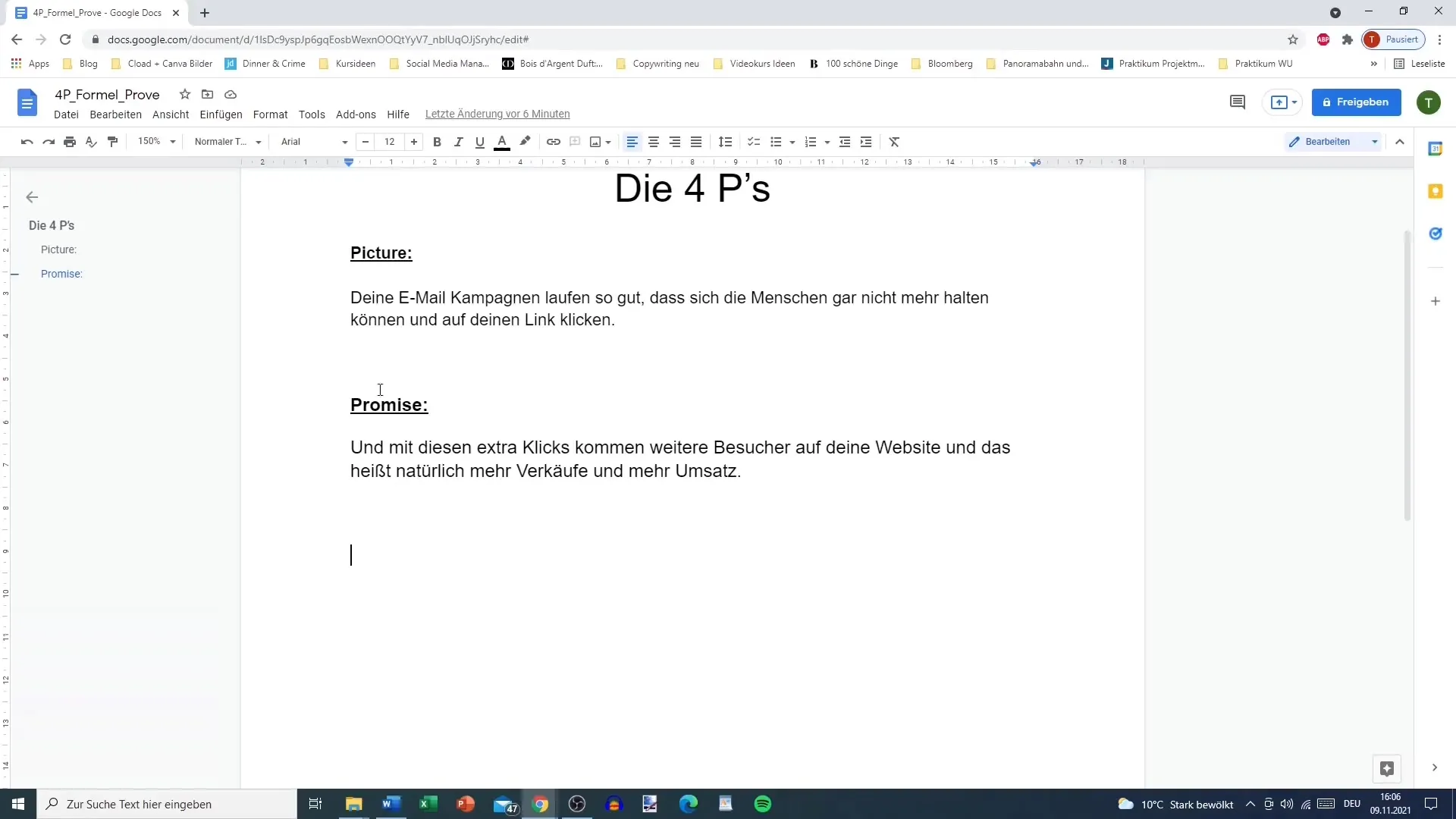The art of copywriting is crucial when it comes to convincing potential customers and motivating them to take action. A key component of this persuasiveness lies in proof – an element that many copywriters often lose sight of. Here, I explain to you how with the third step of the 4P formula, "Proof," you can elevate your copywriting to a new level. You will see that a well-placed proof not only strengthens the trust of your target audience but can also convince skeptics.
Main Insights
- Proof makes your promise tangible and credible.
- Testimonials and specific success stories are effective tools.
- Real, verifiable evidence gives a better sense of your offer.
Step-by-Step Guide to Proof in the 4P Formula
Step 1: Understand the Importance of Proof
Before you start writing, it is important to understand why proof is crucial. You don't just want to make a promise to potential customers but also show that this promise can become a reality. A solid proof helps you build trust and convince skeptics.

Step 2: Use Results and Consequences
A simple way to provide proof is to demonstrate the consequences that arise when your promise is not kept. This creates a certain pressure that motivates potential customers to seriously consider your offer. For example, you could mention that a missed opportunity leads to significant losses.
Step 3: Create Testimonials
Testimonials are another strong argument. They show that others have already benefited from your offer. Choose a person who speaks for your product or service and incorporate their experiences into your text. Make sure the testimonials appear authentic to achieve maximum impact.
Step 4: Tell Success Stories
A very convincing way to provide proof is through stories of successful customers. These stories must be realistic to possess credibility. For example, you could mention a client who achieved a revenue increase of €100,000 in the first month with your help. Such stories are vivid and build trust.
Step 5: Include Additional Testimonials
If you have additional testimonials on hand, it is helpful to list them below your success story. Although testimonials can be distracting in some contexts, they are often extremely effective when combined with well-placed stories. Make sure they blend harmoniously into the overall concept.
Step 6: Avoid Exaggerations
Make sure not to make exaggerated claims. Instead, always work with the truth. This ensures that your proof remains pleasantly credible. The clearer and more specific your proofs are, the better the response will be.
Step 7: Create a Positive Feeling
Even if skeptics dismiss your stories as "too good to be true," you will create a better feeling by presenting the successes of others. It is important to remain honest and use true stories, but even in the case of hypothetical examples, you should convey the feeling that something positive can be said about your product or service.
Summary
In summary, by using evidence in your copywriting, you can strengthen the trust of your potential customers. By integrating testimonials and success stories, you can convince skeptics and substantiate your promises credibly. Remember that the key lies in authenticity and providing clear, verifiable evidence.
Frequently Asked Questions
What is the third step of the 4P formula?The third step is the proof that supports the promise.
How can I effectively use testimonials?Create authentic testimonials from customers who have already had positive experiences with your product.
How do success stories influence my copywriting?Success stories help build trust and make your offers more tangible.
Why should I avoid exaggerations?Exaggerations can undermine the credibility of your statements and deter skeptics.
What is the difference between proof and promise?The promise is the assurance you make, while the proof is the substantiation of that assurance.


